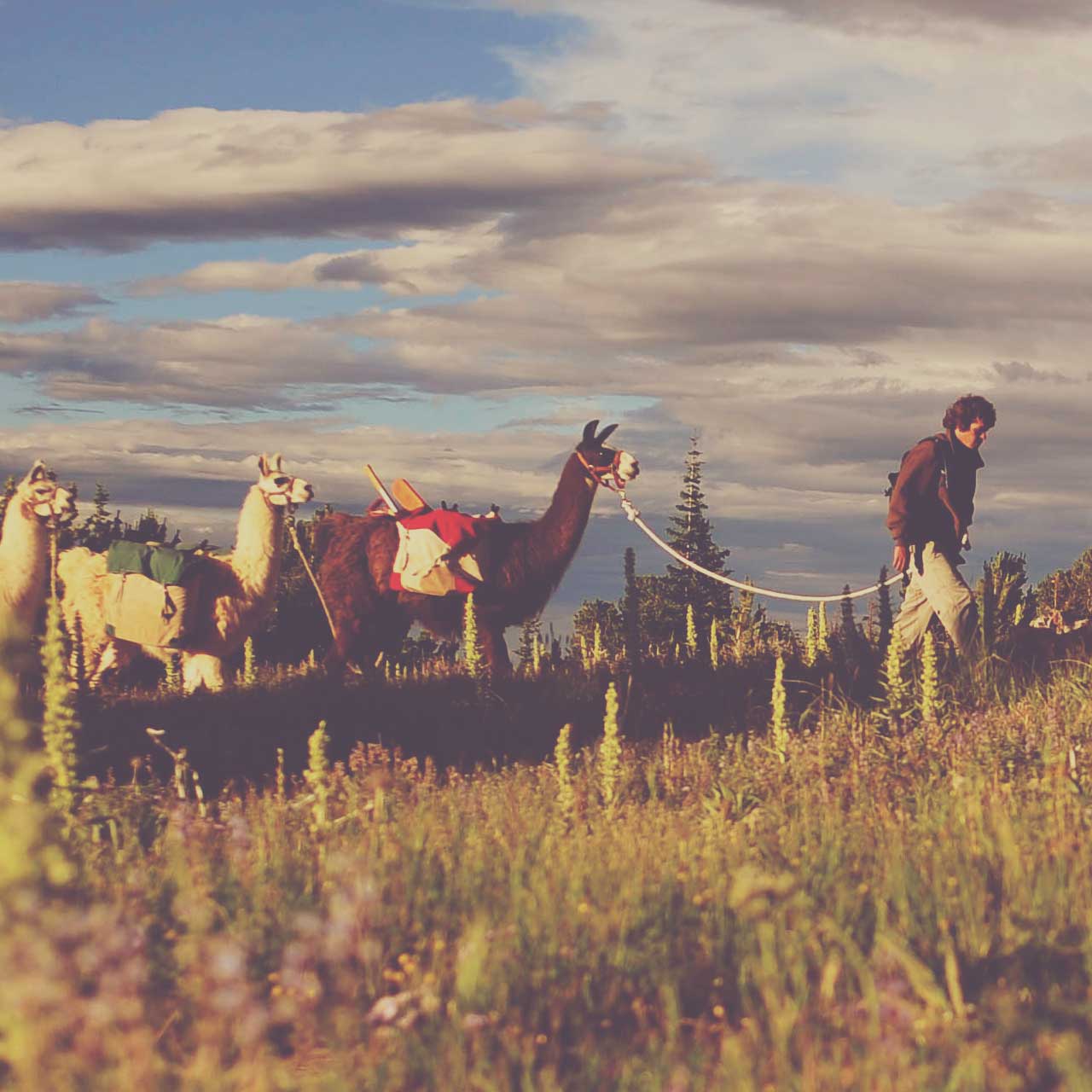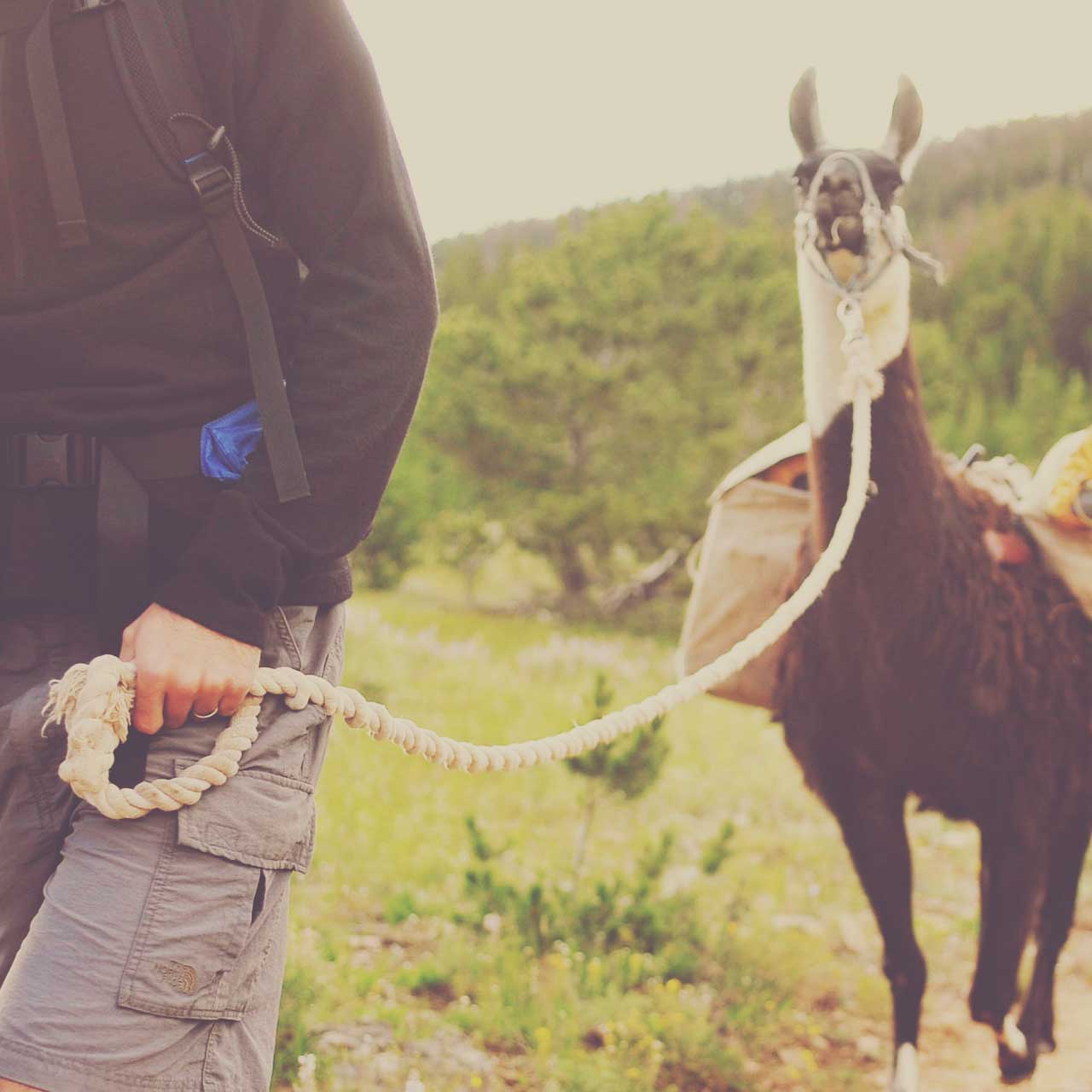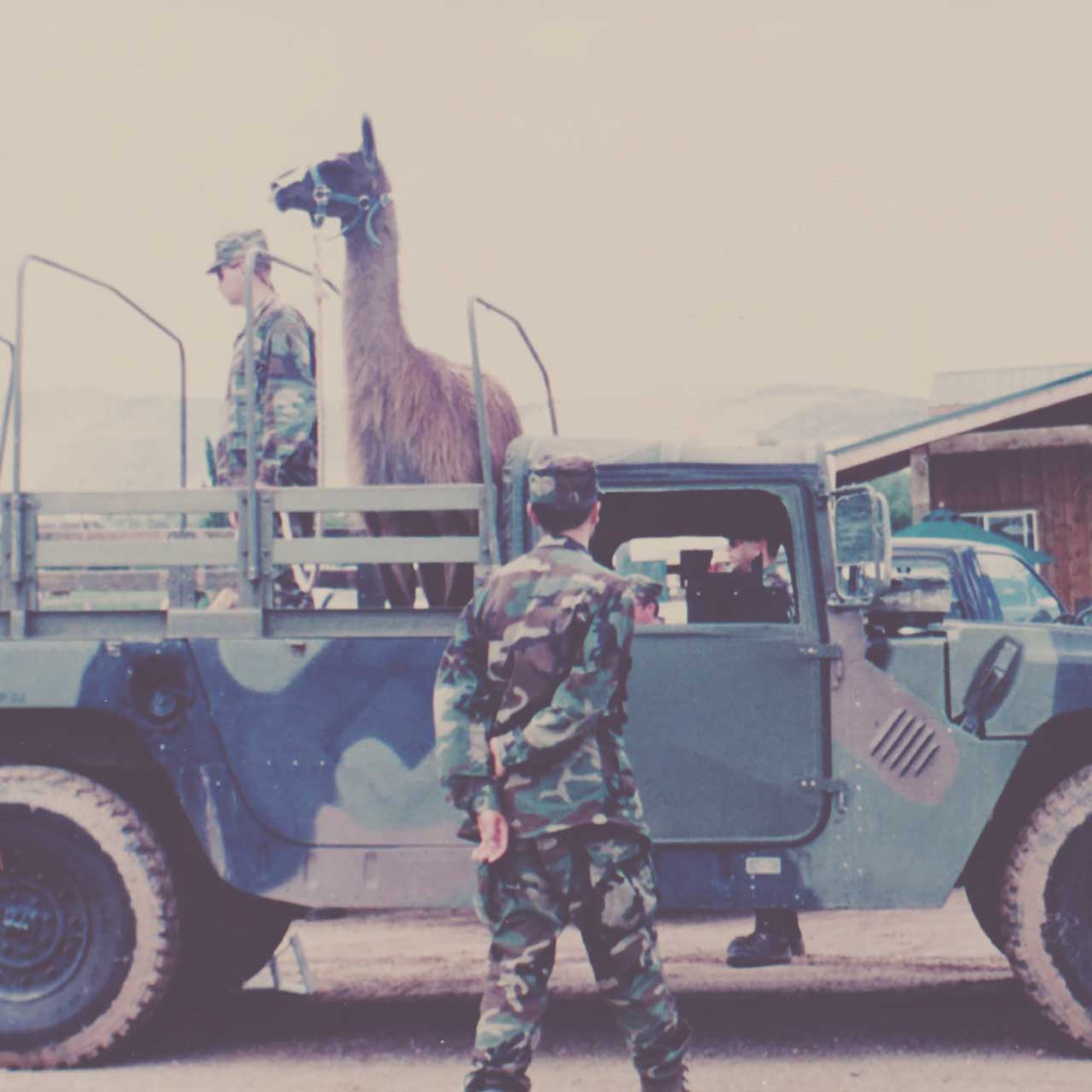Packing is in Their DNA
SHIPS OF THE ANDES: LLAMAS HAVE PACKED FOR CENTURIES
Llamas connected the vast Inca Empire of the rugged South American Andes. They connected the mines of the altiplano (12,000-16,000 feet of elevation) with the lower agricultural and population centers. Food and supplies up, and ore down; they always had a back haul. They didn’t just survive a tough environment, they thrived in it.
Built for the Trail
Llamas are athletic and surefooted and can negotiate deadfall, talus, and slick rock.
Soft, Padded Hoof
Low impact soft hoof does not cut soil and requires no shoe for protection. Quiet Calm, and Condfident
Quiet and Calm
Llamas' low key, controlled disposition helps them avoid over-reaction and makes them safe and easy to handle.
Adapted To Wilderness
Llamas are efficient browsers and eat available forage and sustain themselves on the trail without supplement and minimal water.
A soft, padded hoof with a large surface area/weight ratio gives llamas superior traction and negligible impact on trails and vegetation. Their gait is evenly matched to that of the average hiker. Llamas’ quiet demeanor and low-key disposition makes them safe and easy to handle.
Llamas fit easily into existing packing routines, preserve wilderness aesthetics, and extend your range and comfort. Trail maintenance crews, fire fighters, photographers, fishermen, hunters, climbers and others requiring additional capacity find llamas to be the ideal back country companion.
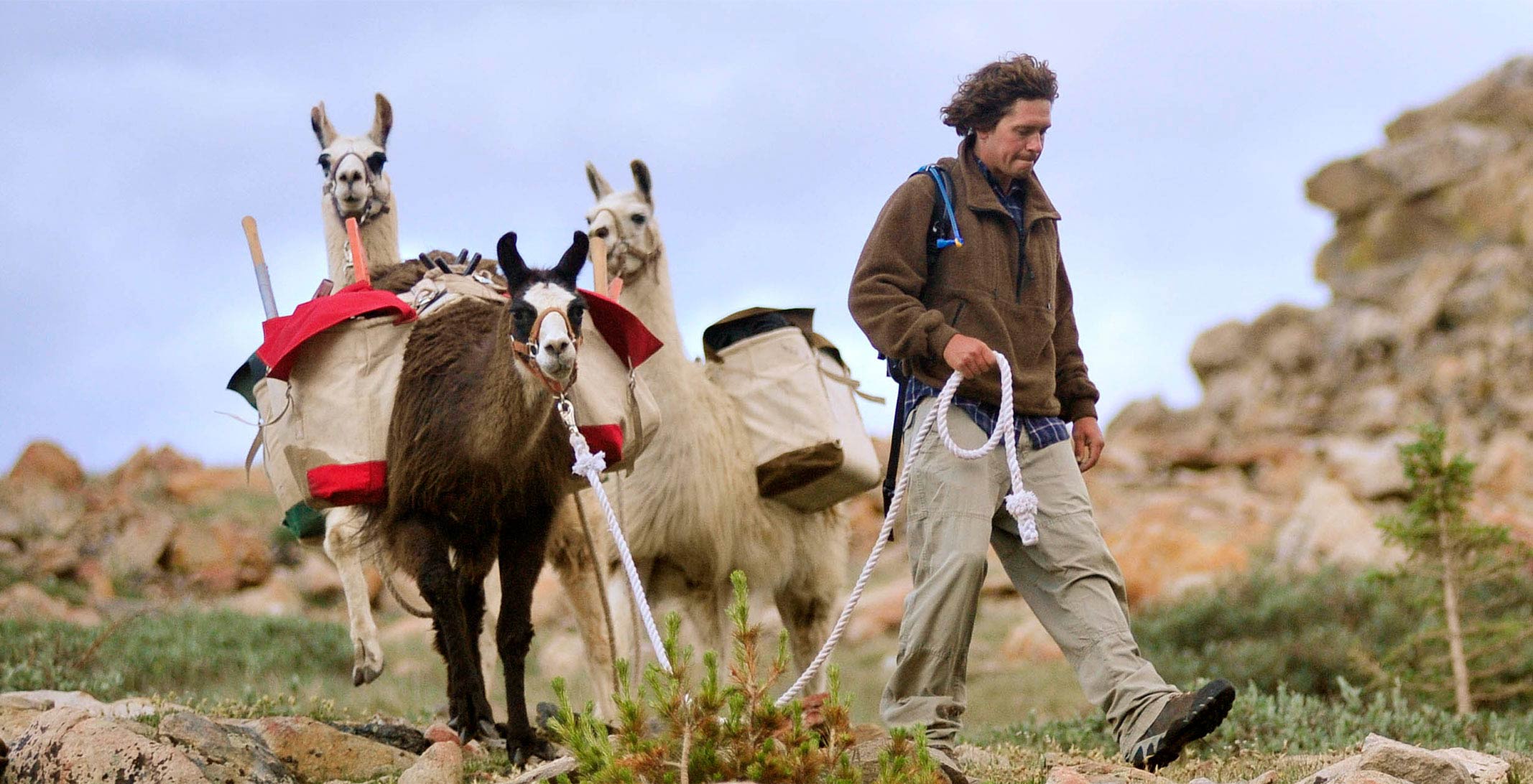

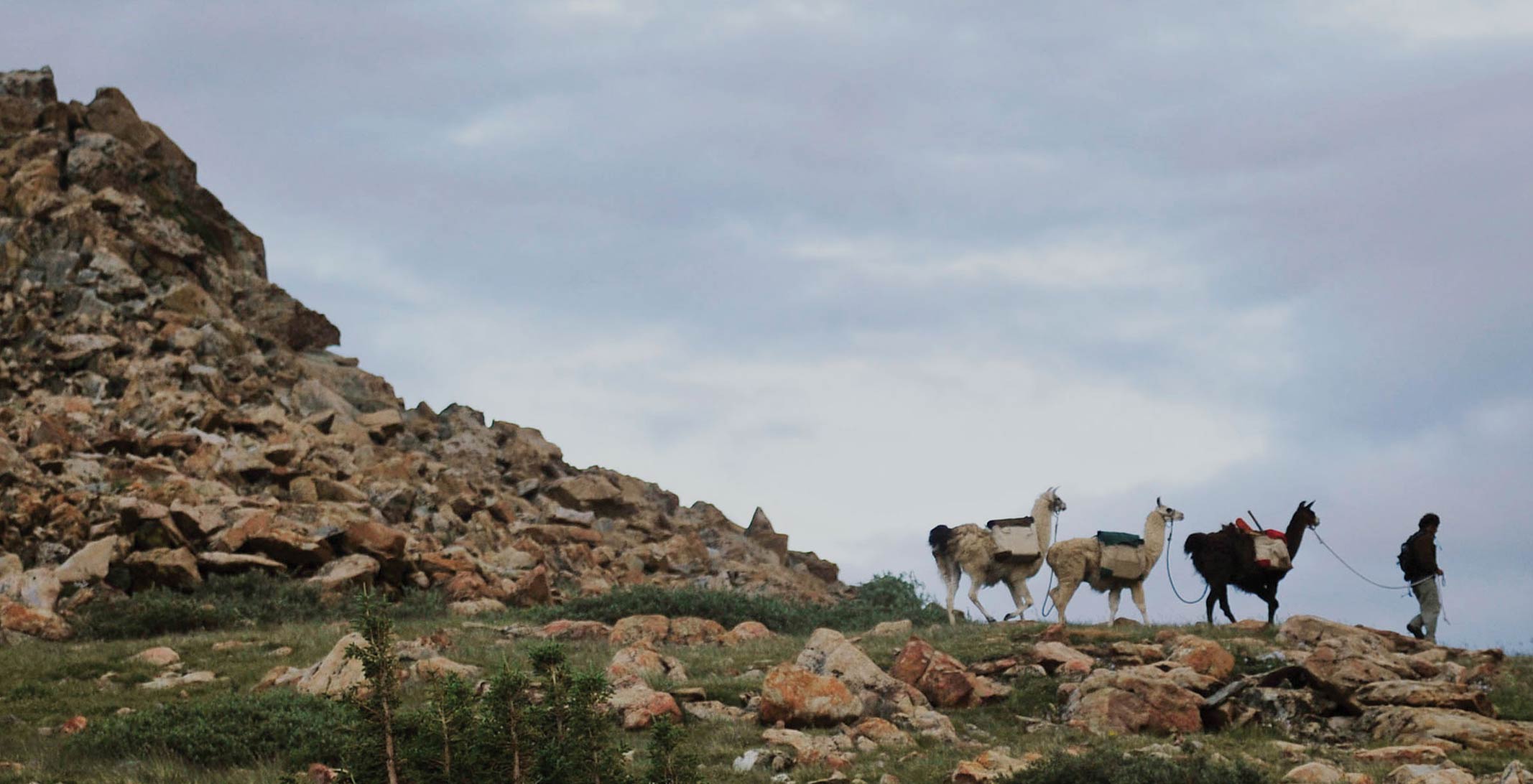
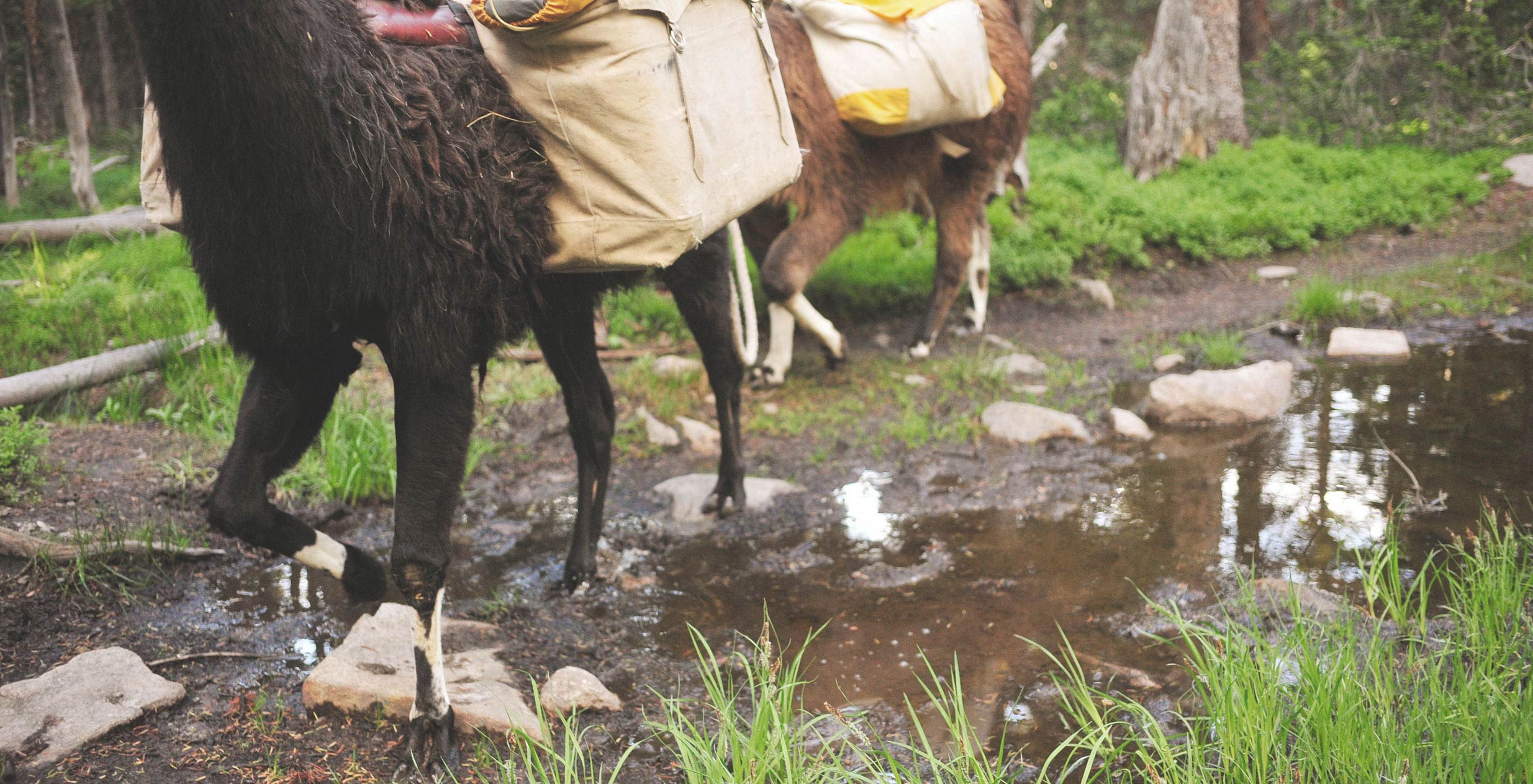
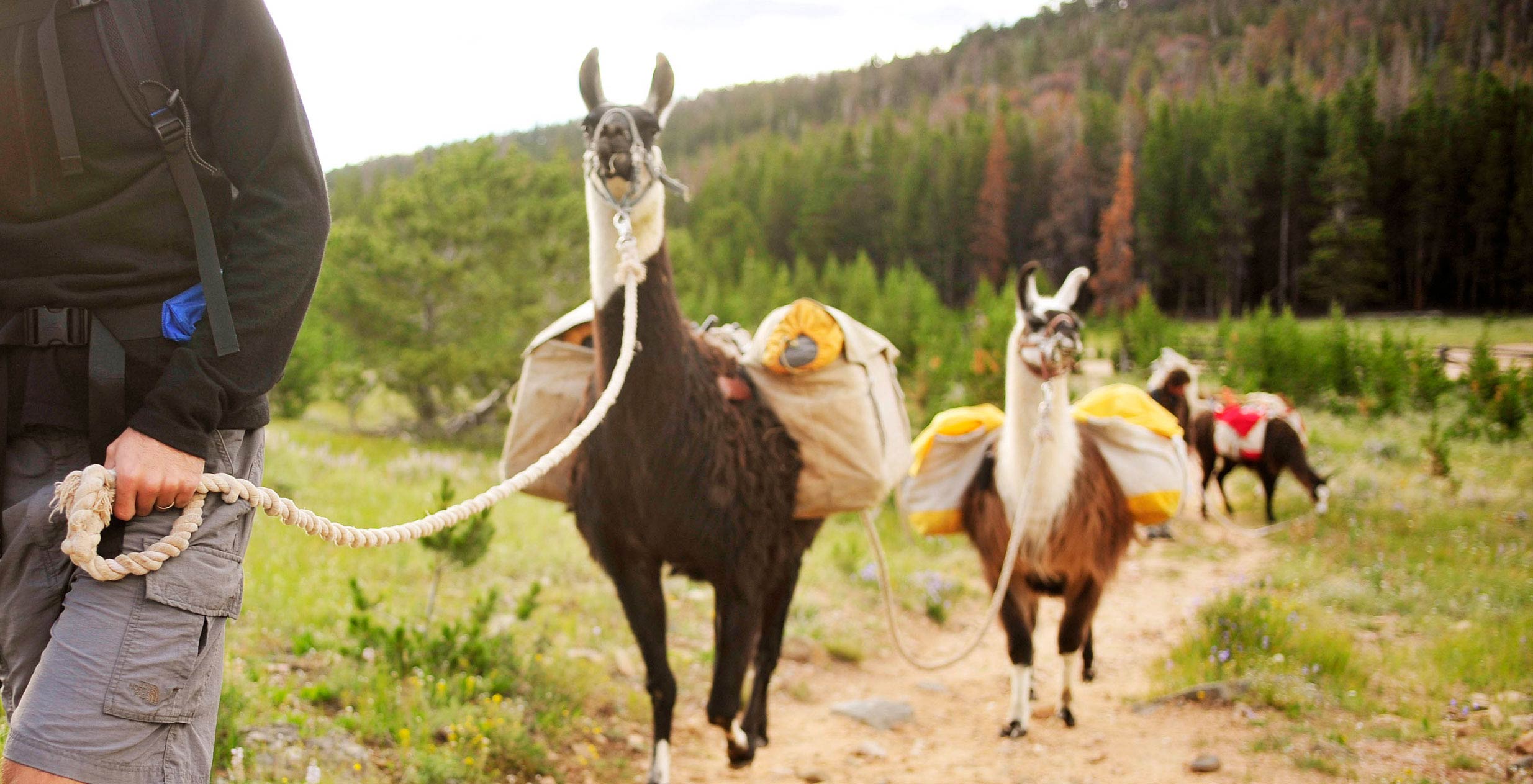
Benefits of Llamas
Less Consumption
Llamas selectively browse a wide variety of plants requiring less forage and allowing picket sites to recover quickly.
Requires less Protein
Llamas utilize low quality forages and don’t require supplemental feed in the backcountry.
Low Impact
Llamas' dry pelleted feces doesn't burn vegetation and degrades quickly. Because they eat 1/10 they produce 1/10 compared to a horse.
Acute Senses
Llamas’ acute vision, hearing, and sense of smell make them an ideal camp sentinel and help spot game. Their quiet demeanor reduces game awareness. They are not blood shy and are comfortable packing meat.
Naturally Healthy
Llamas are naturally healthy, have no endemic diseases, and pose no disease threat to wildlife.
Easy to Adapt
Llamas adapt well to different modes of transportation. Their remarkable fleece coat adapts immediately to variable weather conditions.
Compared to a horse, llamas weigh 1/3, carry ½, and eat 1/10.
Reduced Impact
Low feed and water consumption and a light hoof strike reduces the llamas’ impacts. For sensitive alpine and desert ecosystems, llamas are the preferred pack animal.
Llamas are Camelids
Llamas are camelids and distinct from other wildlife and domestic animal species.
Adapt Naturally
Naturally adapted to high and dry desert conditions, llamas are strikingly healthy and don’t carry or transmit diseases common to wild and domestic species.
Unique Blood Chemistry
Llamas have a unique blood chemistry. The oxygen carrying capacity in their red blood cells as well as their unique antibodies make them both high endurance and highly disease resistant.
Recycle Urea
Llamas' unique ability to recycle urea into usable proteins that other species excrete as waste allows them to maintain on smaller amounts of low quality forage than other species.
Smart Foraging
Llamas instinctively rotate their browsing patterns to limit overuse of forage and locate dung piles to facilitate regrowth and revegetation of more fragile areas of their territory.
Survival Instincts
The territoriality of llamas is remarkable and is an adaptation of their ability to survive. Their territoriality dictates a predictable behavior pattern that is a great asset in the back country as well as daily management.
